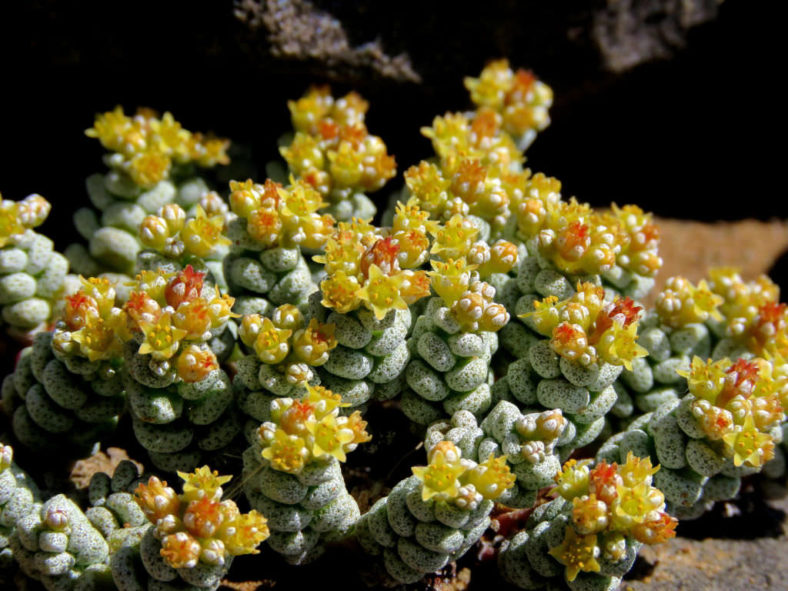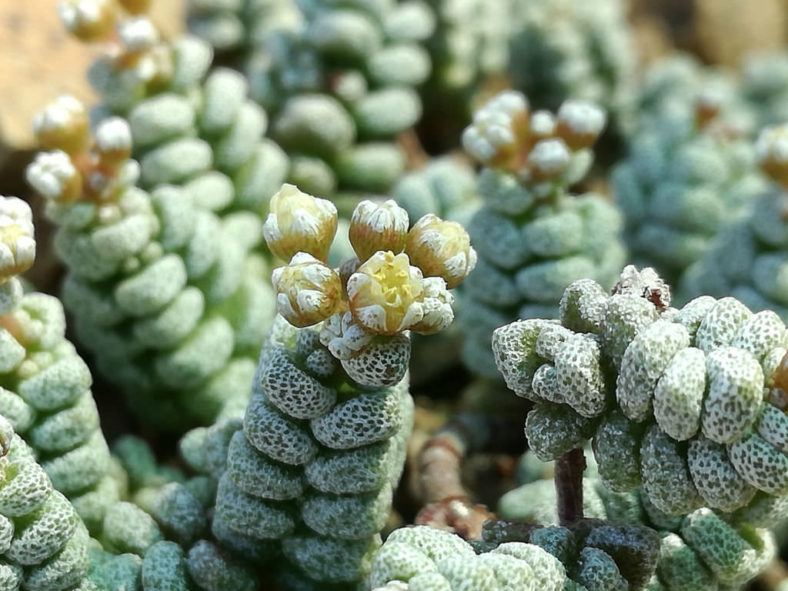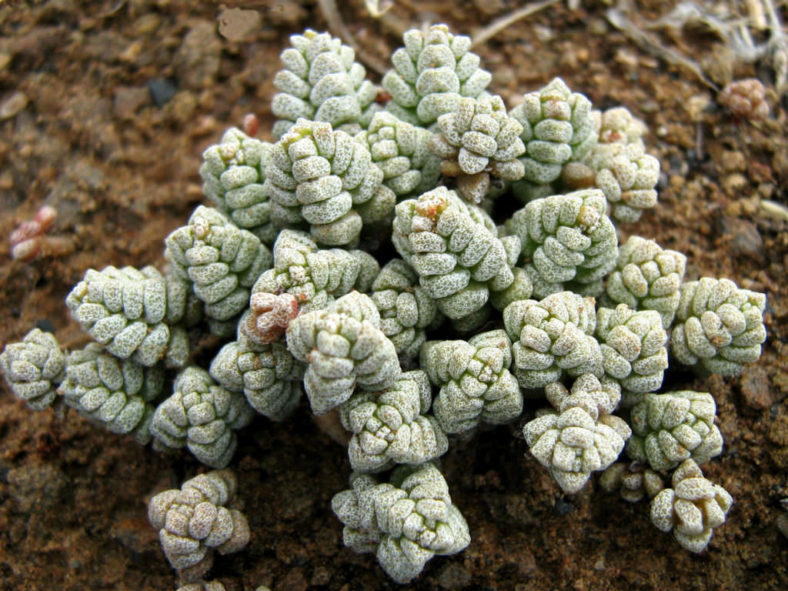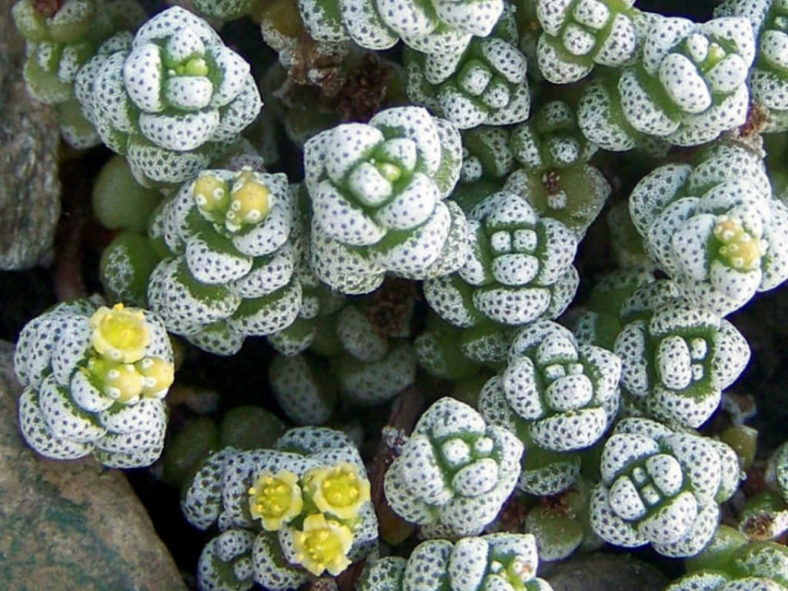Scientific Name
Crassula corallina Thunb.
Common Name(s)
Coral Crassula, Coral Stonecrop
Synonym(s)
Crassula corallina subsp. corallina, Crassula dasyphylla, Crassula simiana, Creusa corallina, Tetraphyle corallina
Scientific Classification
Family: Crassulaceae
Subfamily: Crassuloideae
Genus: Crassula
Etymology
The specific epithet "corallina (kor-al-LIN-a)" means "coral-like" and refers to the leaves that have a coral-like appearance.
Origin
Crassula corallina is native to southwestern Namibia and South Africa (from Free State and Eastern Cape to Richtersveld in Northern Cape).
Description
Crassula corallina is a succulent plant with branched erect or procumbent stems that grow up to 3.2 inches (8 cm) long, rooting at the nodes. The thick fleshy leaves are warty, green, grey-green to grey-brown, with a white waxy covering at the apex. They are obovate to elliptic, rhombic in cross-section, measuring 0.2 inches (0.5 cm) long and 0.15 inches (0.4 cm) wide.
The flowers are urn-shaped, white or cream-colored, with petals fused at the base and recurved tips. They appear in terminal clusters from spring to mid-summer.

How to Grow and Care for Crassula corallina
Light: Crassula plants prefer full sun to partial shade. However, intense afternoon sun in the hottest period of summer can burn the leaves of the plants. Nevertheless, most Crassulas can be grown indoors if given enough light.
Soil: They are not particular about soil pH, but Crassulas require very porous soil with excellent drainage.
Hardiness: Crassula corallina can withstand temperatures as low as 30 to 50 °F (-1.1 to 10 °C), USDA hardiness zones 10a to 11b.
Watering: These plants have typical watering needs for succulents. Avoid overwatering using the "soak and dry" method, where the soil is soaked with water, slowly drained, and left to dry out before watering again. Reduce watering in winter.
Fertilizing: Crassulas will benefit from a small amount of organic fertilizer in mid-spring when they start actively growing.
Repotting: Repot as needed, preferably in spring, at the beginning of active growth.
Propagation: Crassulas are generally started by leaves or stem cuttings. They can also be grown from seeds and offsets.
Learn more at How to Grow and Care for Crassula.
Toxicity of Crassula corallina
Crassula plants are generally nontoxic to people and pets.
Subspecies of Crassula corallina
Links
- Back to genus Crassula
- Succupedia: Browse succulents by Scientific Name, Common Name, Genus, Family, USDA Hardiness Zone, Origin, or cacti by Genus
Photo Gallery
Click on a photo to see a larger version.


